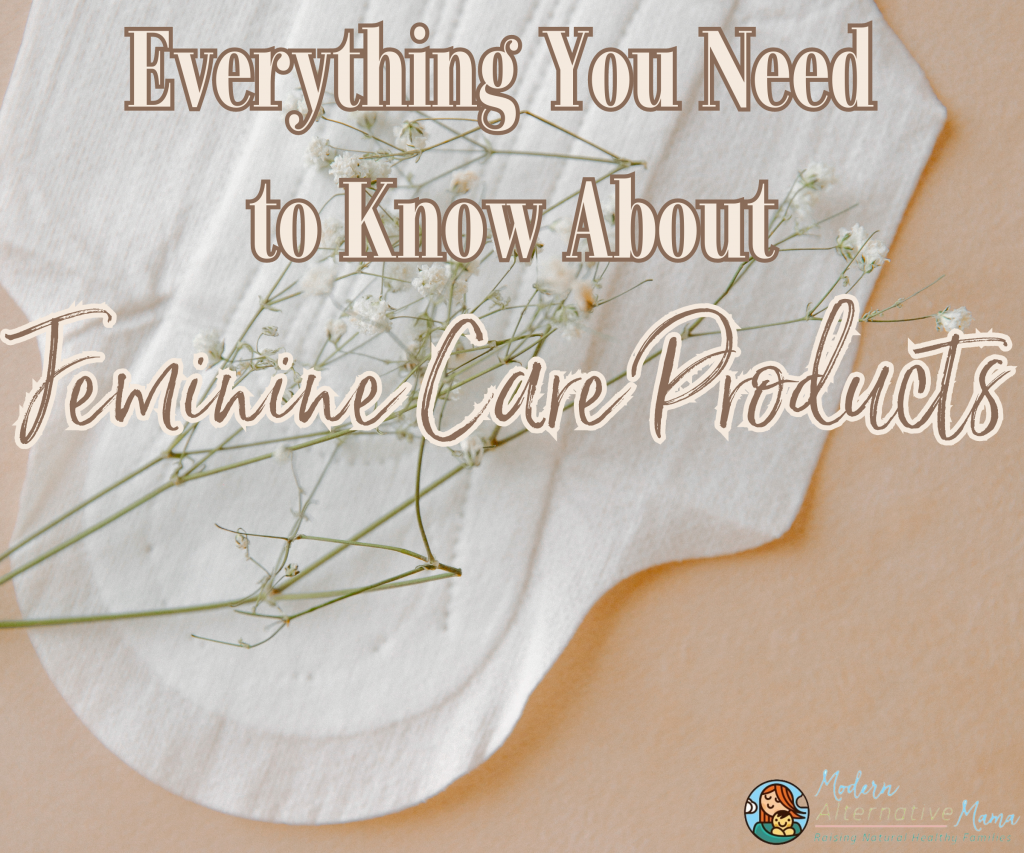Understanding hidden chemicals and embracing safer alternatives
As natural-minded mamas, we strive to make informed choices about the products we use daily. One area that often goes overlooked is menstrual care. Recent studies have raised concerns about the presence of toxic chemicals in tampons and disposable pads, especially in some of those top-name brands! This has prompted many women to seek healthier alternatives. Let’s dive into the research and explore safer options for our cycles.
The Hidden Chemicals in Conventional Menstrual Products
1. Heavy Metals in Tampons
A groundbreaking study by researchers at UC Berkeley analyzed 30 tampons across 14 brands and discovered the presence of 16 different metals, including lead, arsenic, cadmium, and mercury. Notably, lead was found in ALL brands tested. These metals can be absorbed through the vaginal lining, potentially entering systemic circulation, which can pose various health risks.
- Endocrine Disruptors: Phthalates, Parabens, and Phenols
A 2023 systematic review in BJOG: An International Journal of Obstetrics and Gynecology found measurable levels of endocrine-disrupting chemicals like phthalates, phenols, and parabens in menstrual products. These substances can interfere with hormone regulation, potentially impacting reproductive health. -
PFAS – The “Forever Chemicals”
Per- and polyfluoroalkyl substances (PFAS), known as the forever chemicals, have been detected in various menstrual products, including pads and period underwear. PFAS are associated with health risks such as decreased fertility, hormonal disruption, and even an increased risk for cancer. TIME magazine even did an article on this!
Why It Matters: Health Impacts Over Time
The vaginal and valvular tissues are highly absorbent, allowing chemicals in menstrual products to enter the bloodstream more readily than through other skin areas. Over time, exposure to these toxic substances can lead to:
– Hormonal Imbalances: Endocrine disruptors can interfere with natural hormone regulation.
– Reproductive Issues: Chemicals like phthalates and PFAS have been linked to fertility problems.
– Increased Cancer Risk: Long-term exposure to substances like dioxins and certain metals may elevate cancer risk.
– Immune System Effects: PFAS exposure has been associated with immunological disorders and inflammation.
Safer Alternatives for a Healthier Cycle
Transitioning to safer menstrual products can significantly reduce any exposure to harmful chemicals. Here are some options…
1. Reusable Cloth Pads (Mama Cloth)
Crafted from natural fabrics like organic cotton or bamboo, reusable cloth pads are free from synthetic chemicals. They are machine washable, eco-friendly, and gentle on sensitive skin. You can purchase these online or even make your own! For a DIY guide, check out our Make Your Own Mama Cloth blog post.
2. Menstrual Cups
Made from medical-grade silicone; menstrual cups are inserted into the vagina to collect menstrual fluid. They are reusable, cost-effective over time, and free from harmful chemicals. Brands like DivaCup and Lunette are popular choices. However, the current number one for low toxins is Saalt.
3. Organic Disposable Pads and Tampons
If you prefer disposables, opt for products made with 100% certified organic cotton, free from fragrances, dyes, and chlorine bleaching. Brands like Viv, LOLA, and Rael have gained popularity for their commitment to transparency and safety.
Postpartum Pad Care: Supporting healing naturally
After giving birth, your body undergoes an intense healing process, especially in the first couple of weeks. I mean, not only do we possibly have tears down there, but we have a huge dinner plate-sized wound inside of us! Choosing gentle, non-toxic products for postpartum care can significantly support this recovery.
As we already somewhat went over, conventional pads can contain synthetic fibers, fragrances, bleach, and absorbent gels that can irritate sensitive postpartum tissues. These chemicals can also disrupt the natural microbiome of the vaginal area, which is already in a delicate state after giving birth!
Your options are the same as mentioned, with the exception of the menstrual cup—you wouldn’t want to use that right away postpartum. If you are bleeding heavily for a few days, maybe you want to consider an adult diaper. Most of those organic pad brands make those, too! I really love Natracare postpartum-specific pads. Rael also makes an organic cotton washable pad that I really like and felt great using postpartum.
Prioritizing clean materials postpartum isn’t just about preference; it’s about giving your body the kindest, most supportive care during recovery.
It’s essential to approach this information without fear but with empowerment. Understanding what’s in our menstrual products allows us to make choices that align with our health values. Transitioning to safer / cleaner alternatives is a personal journey, and every small step contributes to overall well-being.
By staying informed and choosing products that prioritize health and safety, we can take proactive steps toward a healthier menstrual experience! You deserve the best, mama!



I read on the package of a menstral cup that they also can cause TSS. 🙁
That is true; menstrual cups can cause TSS, but from what I’ve read in scientific literature, it’s not very common. This article reports very few cases of TSS from menstrual cups and even found lower bacterial vaginosis cases in menstrual cup users. I hope that by sharing this article, you make an informed decision for your needs. 🙂
https://www.thelancet.com/journals/lanpub/article/PIIS2468-2667(19)30111-2/fulltext#seccestitle70